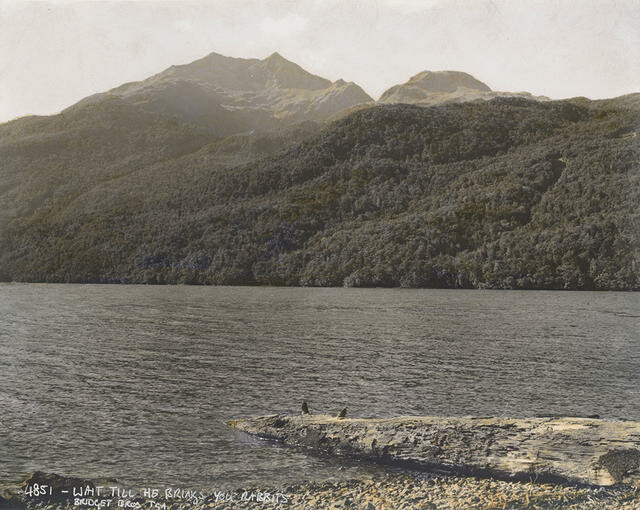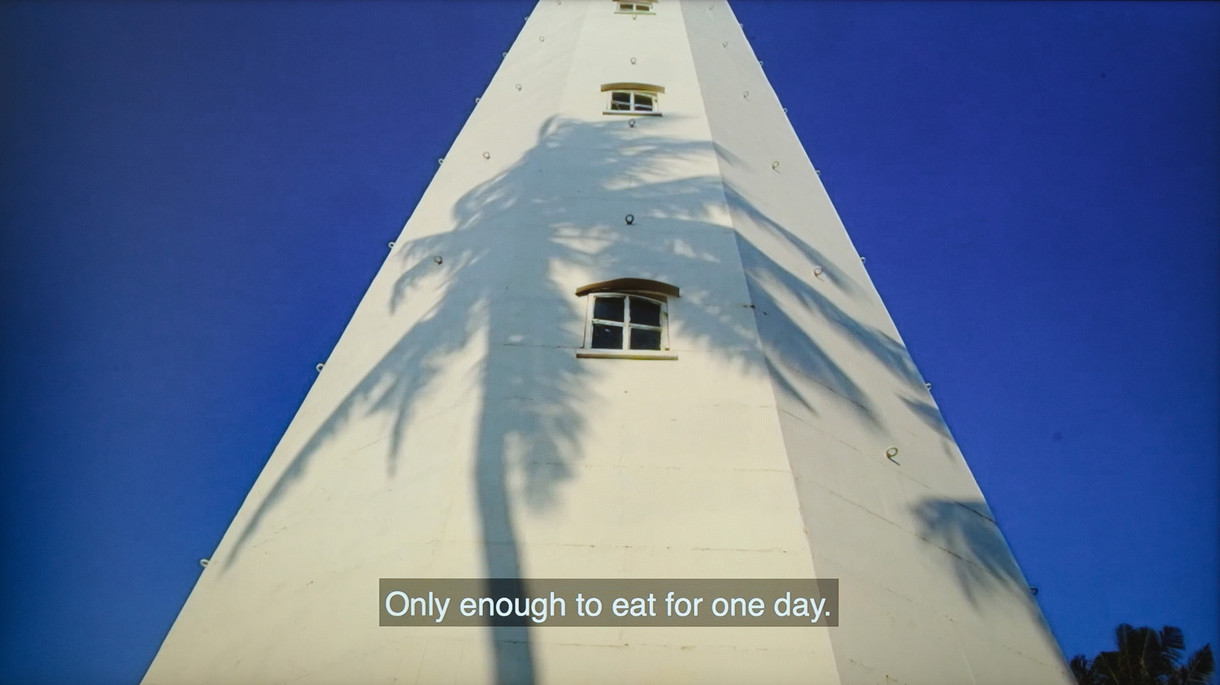Bridget Reweti
Aotearoa New Zealand, b.1985
Ngāti Ranginui,
Ngāi Te Rangi,
Māori
4851 WAIT TILL HE BRINGS YOU RABBITS
- 2021
- Whenua coloured silver gelatin print
- Purchased 2022
- 235 x 286mm
- 2022/049.3
- View on google maps
Location: Arcade
Tags: birds (animals), lakes (bodies of water), mountains, trees
Te Rua-o-te-Moko Fiordland and Kā Puna-karikari-a-Rākaihautū Southern Lakes of Te Waipounamu South Island have been popular tourist destinations since the mid-nineteenth century. Commercial photographers of the time, such as the Burton Brothers, relied heavily on views of these iconic landscapes to make commercially attractive photographs to sell to customers. In this selection of photographs from Bridget Reweti’s Summering on Lakes Te Anau and Manapouri series, she responds to the Burton Brothers’ 1889 photographs from Wintering on Lakes Te Anau and Manapouri. Reweti reclaims them through a different lens informed by the awareness that these sites hold significance and memories for mana whenua, Kāi Tahu. She hand-coloured each photograph with whenua given to her by locals in each location, reconnecting her images with the experience of being present in the land, rather than ‘snapped and trapped’ views separated from their physical and cultural context.
mana whenua ~ Māori with authority over particular land or territory
Kāi Tahu ~ tribal group of much of Te Waipounamu South Island
whenua ~ ground, soil
He Kapuka Oneone – A Handful of Soil (from August 2024)
Exhibition History
Perilous: Unheard Stories from the Collection, 6 August 2022- 21 July 2024
Part of a series called Summering on Lakes Te Anau and Manapouri, these photographs were made by Bridget Reweti in response to another photographic series, Wintering on Lakes Te Anau and Manapouri, made by Ōtepoti Dunedin photographer Alfred Burton in 1889. Travelling to the same remote locations he photographed 120 years previously, Bridget reclaimed them through a different lens, one informed by the awareness that these site hold significance and memories for the mana whenua, Ngāi Tahu. She hand-coloured each photograph with whenua (earth) given to her by locals in each location, reconnecting her images with the experience of being present in the land, rather than ‘snapped and trapped’ views, separated from their physical and cultural context.


